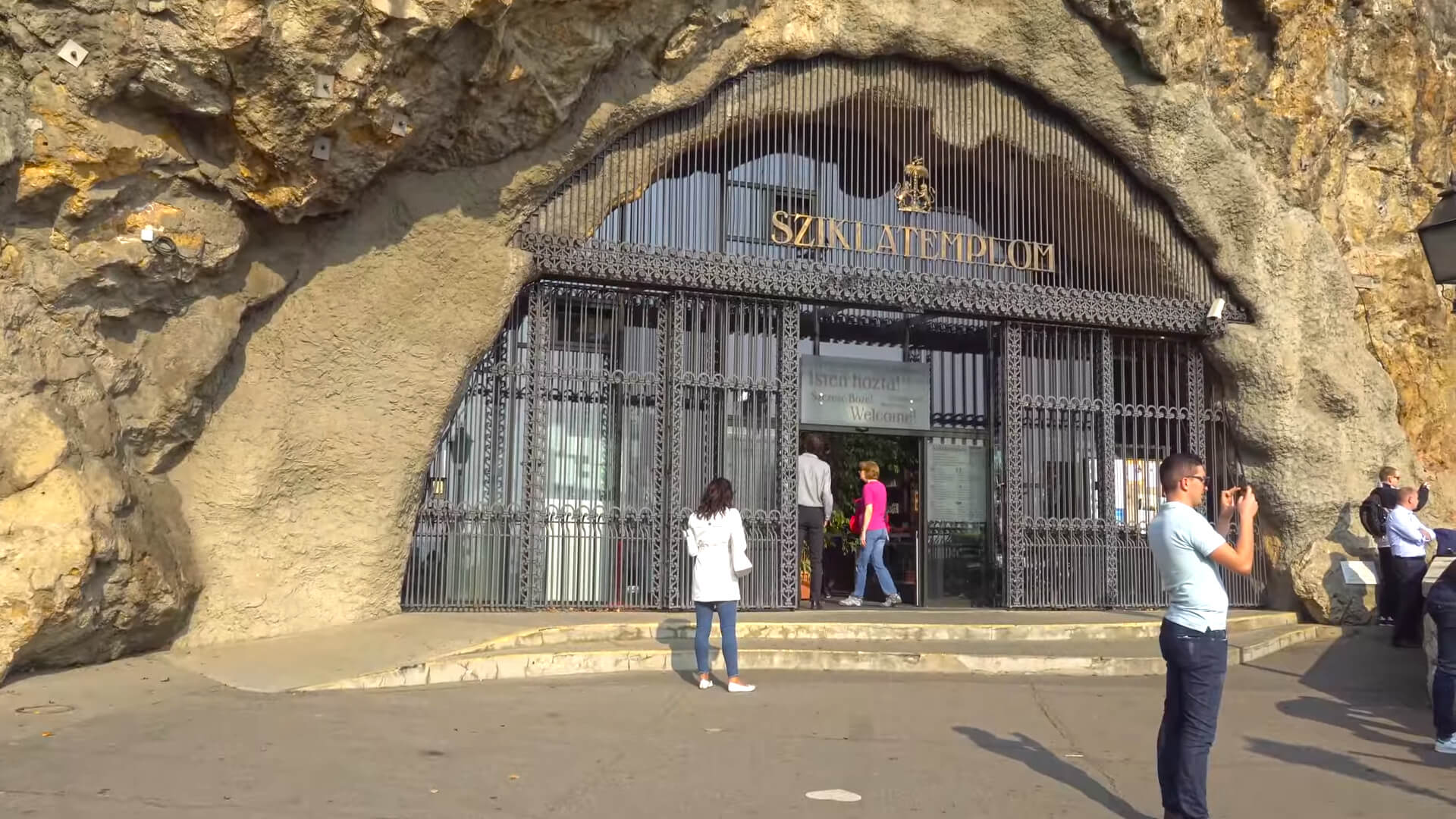Cave Church in Budapest
Location and Getting There
The Cave Church is located in the Gellért Hill area of Budapest, on the Buda side of the city. The nearest tram stop is Szent Gellért tér, and there are several bus stops in the area as well. It’s also possible to reach the church on foot, but be aware that the walk up the hill is steep.
Address: Budapest, Szent Gellért rkp. 1, 1114 Hungary
Website: https://sziklatemplom.hu/
What to Expect
The Cave Church is built into a natural cave system, and the interior is decorated with beautiful frescoes and sculptures. The church is relatively small, and visitors can explore the main chapel and several smaller chapels within the cave system.
The Origins of the Cave Church
The roots of the Budapest Cave Church can be traced back to the 1920s when a group of Hungarian pilgrims visited the cave in Lourdes, France. Inspired by the religious significance of the cave, they envisioned constructing a similar place of worship in Budapest. The construction of the church was completed in 1931, and it was dedicated to Our Lady of Hungary. Alongside the church, a neo-Romanesque style monastery was built to accommodate the Pauline monks who had recently returned to Hungary.
Turbulent Times: Communist Suppression and Closure
The peaceful years following the completion of the Cave Church were abruptly interrupted by the rise of communism in Hungary. In the 1950s, the Communist regime abolished all monastic orders, forcing the monks to abandon the Cave Church. The entrance was sealed with concrete, and the cross above it was torn down. For several decades, the church remained closed, serving as a poignant reminder of the suppression of religious freedom.
Rebirth and Restoration
With the fall of communism in 1989, Hungary embraced democracy, and the Cave Church was finally able to reclaim its spiritual purpose. The concrete wall blocking the entrance was demolished, and the church began its restoration process. By 1992, the Chapel in the Rock, as it came to be known, was reopened to the public. The Pauline monks once again assumed responsibility for its operation, ensuring the preservation of its historical and religious significance.
Architectural Marvels: A Fusion of Nature and Faith
One of the most captivating aspects of the Budapest Cave Church is its architectural fusion of natural rock formations and man-made elements. As you enter the church, you will be greeted by the sight of finely crafted religious statues against the rough stone walls of the cave. The interplay between light and shadows creates an ethereal atmosphere, evoking a sense of reverence and awe.
Treasures Within the Cave Church
As you explore the Budapest Cave Church, you will encounter a myriad of treasures that reflect its rich religious history. One notable artifact is a reproduction of the Black Madonna of Częstochowa, Poland, which is set within a design featuring the mythological turul bird, the national symbol of Hungary. This symbolic fusion pays homage to both local and international religious traditions. Additionally, the church houses a skillfully crafted stained glass medallion window next to the Black Madonna, adding to the visual splendor of the space.
The Healing Springs: A Source of Spiritual and Physical Renewal
The Budapest Cave Church possesses an additional element that sets it apart – a natural hot spring. The healing properties of the hot springs were believed to have miraculous qualities, attracting pilgrims seeking both spiritual and physical renewal. Even today, visitors can experience the soothing effects of the hot springs, immersing themselves in the same waters that were revered by Saint Ivan, the original hermit monk who inhabited the cave.
Visiting the Budapest Cave Church
To fully experience the beauty and tranquility of the Budapest Cave Church, visitors are encouraged to explore its halls during the designated opening hours. Guided tours are available, providing insightful commentary on the historical and religious significance of the site. It is important to note that the Cave Church also functions as a place of worship, so visitors are advised to be respectful during religious services.
FAQs
Where is the Cave Church located?
The Cave Church, also known as Sziklatemplom, is located on the Gellért Hill, on the Buda side of the Danube River, just next to the famous Gellért Baths.
What is the history of the Cave Church
The Cave Church was established in 1926 by Pauline monks. The church was sealed off in 1951 during the Communist era, and a concrete wall was built at its entrance. It was reopened for worship in 1989.
Can anyone visit the Cave Church?
Yes, the Cave Church is open to the public. It functions both as a place of worship and a tourist attraction.
What are the opening hours of the Cave Church?
Opening hours can vary, but typically, the church is open from 9:30 AM to 7:30 PM during the summer months (April to September) and from 9:30 AM to 5 PM in the winter months (October to March). Check their official website for the most recent information.
Can I take pictures inside the Cave Church?
Photography is allowed, but without the use of flash. Policies may change, so it's always a good idea to check the current rules or ask the staff.



